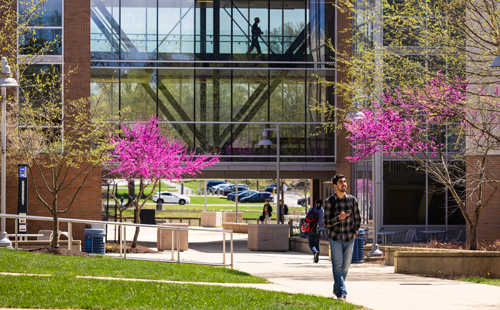People shoving past their neighbors in pre-dawn store lines, abandoning their children in aisles to stockpile merchandise and stampeding toward limited-quantity today-only deals. Otherwise reasonable people lulled into calmness by Thanksgiving turkey are now poised for a cutthroat battle over the last flat-screen TV. But these are not scenes from a dystopian movie; this is the chaos, adrenaline and discount hunting that have defined Black Friday since its inception. But now, these scenes are becoming a relic of the past as the retail landscape changes.
There are two key factors behind the shift in Black Friday. One is the evolving retail landscape: shoppers looking for the best deals are now more frequently resorting to browsing online. According to Facteus, Black Friday 2024 saw an 11.1% spike in online shoppers, compared to a 5.4% decline for in-person shopping. Consumers are buying more, yet brick and mortar stores see less traffic. Secondly, Black Friday has lost some of its urgency. Once a solitary day of deals, Black Friday has been extended into a multi-day long event.
The term Black Friday originated in the 1950s in Philadelphia, coined by police officers who used it to describe the chaos that occurred during the day after Thanksgiving. While initially this name has a negative connotation, retailers took advantage of the crowds and began to recognize this day after Thanksgiving as the best shopping day of the year. As retailers increasingly offered sales and specials, the term took on a secondary meaning. There is some disagreement in urban myths however, as many believe that it is the day stores break even in the black, as opposed to the red. Over time, Black Friday became a yearly tradition for millions of Americans, who wake up early to brave the rowdy lines in search of the best deals.
Many believe that this “holiday” showcases humanity’s worst capitalist instincts, yet standing in a retail store on Nov. 29 may provoke mixed emotions, even in Black Friday haters. The once electric atmosphere of a department store during Black Friday is now a lifeless and bare experience while warehouses and delivery trucks are packed, retail shelves are sparse and the bustling crowds have retreated. Businesses are seeing fewer and fewer Black Friday customers every year, and there is no question that the changing retail landscape has broad social and economic consequences. Perhaps this now-digital multi-week holiday needs to return to its roots.
A return to a conventional Black Friday could boost the sense of excitement and urgency that one defined the holiday. Consumers have also missed the clarity that a one-day event brings as Black Friday frenzies left no time for prolonged decision-making. Nowadays, with the plethora of deals available across the web throughout the months of November and even December, shoppers now confront a dizzying abundance of choices, becoming overwhelmed with their decisions and making it harder to make selections and purchases.
Retailers have good reason to appreciate an extended “Black Friday Month” as it helps their inventory planning. Companies claim that extending the retail holiday and spreading revenue throughout the month will make customers feel more inclined to shop for weeks on end. However, consumer behavior is the complete opposite. Customers do not feel an immediacy to purchase which ultimately results in fewer purchases and less revenue. According to Episerver, 92% of consumers visiting a company’s website for the first time do not buy anything.
Many argue that today’s swing to a more relaxed Black Friday is better for the country, as it allows families to relax together rather than waking up early and fighting over high demand items. However, as the world allows technology to take over once-treasured traditions, it is easy to ask “what’s next?” What else will be turned into a dull and digital event? Will future societies switch to fully digital schools? Self-driving cars? Some communal activities hold immeasurable value, and Black Friday is one of them.
The hope is that a return to a more traditional Black Friday will enliven customers and boost businesses around the country. Profits will spike and the fading magic of the holiday will return. It was never just about the Black Friday discounts — the holiday’s thrill brought families closer together.
A return to a single-day holiday does not need to cut out online shopping. It will become key that retailers focus on digital marketing, concentrating promotions into one high-energy day. As everyday tasks become increasingly online, it will be easier to advertise to shoppers. Companies will be able to use a more balanced approach, adapting to more modern trends, but also keeping the traditions intact.
Preserving the Black Friday tradition may seem like a silly mission, but it is needed for companies and customers alike to stay afloat. The economic benefits for the US economy is essential and if it turns into a diluted, drawn-out event, these sales will quickly diminish. Black Friday needs its identity back, because stretching it out is nothing to be thankful for.









